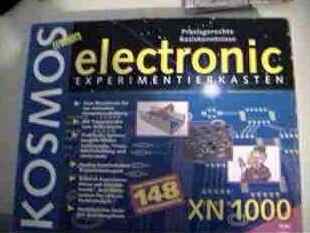
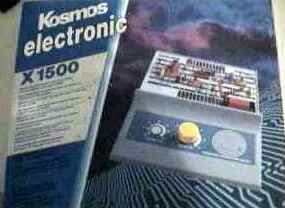
About small SBC systems


Many kits are/were available to start with electronics.
Here a small selection of kits I (once) owned.
There is one manual for EE5 and EE10, a German EE5 manual also exists.
The cover of the manual is clearly the base of the EE8/20 manual: the front of the EE8/20 manual and box shows the EE5/10 board!
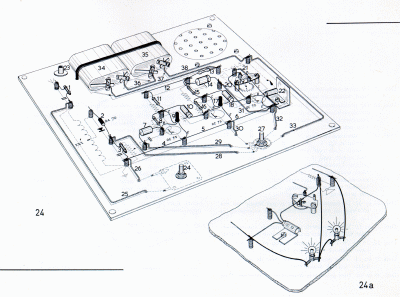
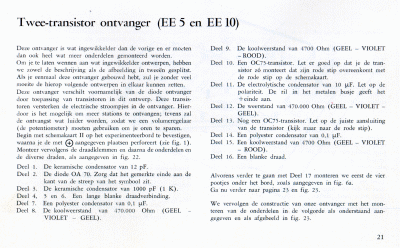
I have scanned the Dutch, French and German manuals:
| Dutch manual, 1963 | 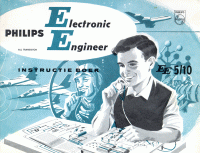 |
| German manual, 1963 | 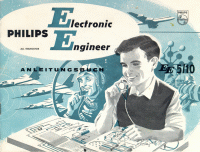 |
| French manual, 1963, second edition | 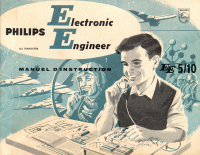 |
| German manual for EE5 only | 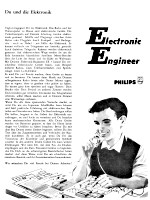 |
EE5/1-EE10/1Diode receiver
EE5/2-EE10/2 Two-transistor receiver
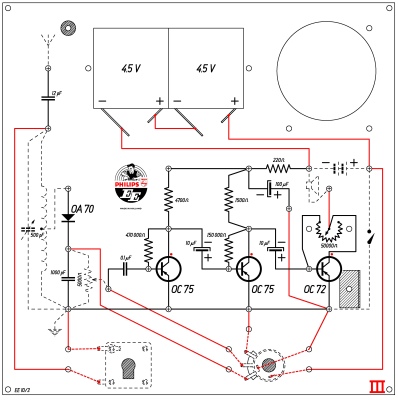
III
EE10/3 Three-transistor receiver
EE5/4 Two-way telephone
EE10/4 One-way telephone
EE5/5 Morsecode trainer, Rain and moisture alarm
EE10/5 Low-frequency amplifier, Rain and moisture alarm
EE10/7 Flashing beacon
EE10/8 Burglar alarm
EE10/9 Morsecode trainer, Electronic xylophone, Rain and moisture alarm, Light detector
The EE3xxx series is the last Electronic Engineer kit published by Philips. After this series the name changed to ABC and the products were licensed to Schuco.
See the complete manual (a large PDF document) in the Library of Tor Gjerde
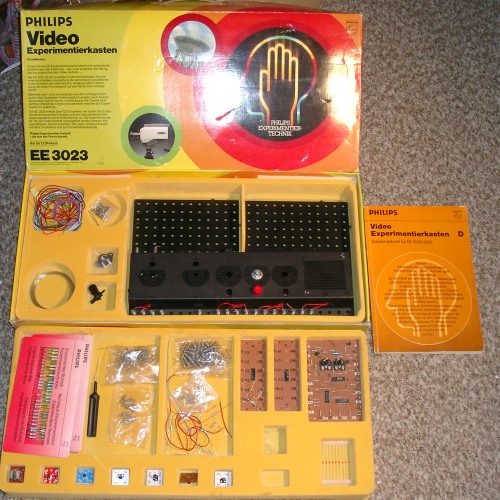
What makes this box interesting is that it allows to use a normal television for the oscilloscope projects in the EE1007/EE2007/6105 that required a oscilloscope tube.
It has therefore a video signal generator, quite simple with some cmos IC’s, on a special PCB. See the circuit diagram on the right, quite simple!
Do not expect a real oscilloscope, it is quite limited in frequencies it can show. But the educational value is good, to see the electronic signals is great.
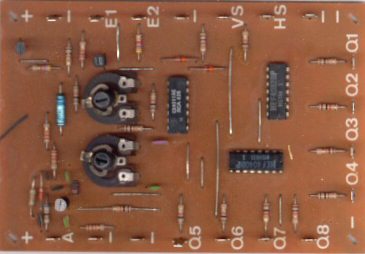
The oscilloscope display
Click here to see the EE200x brochure
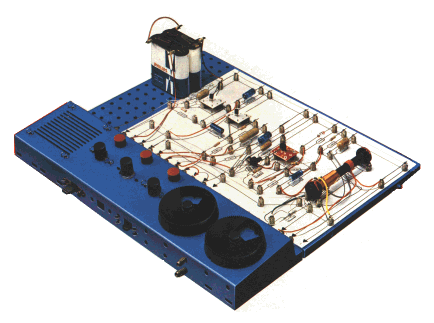
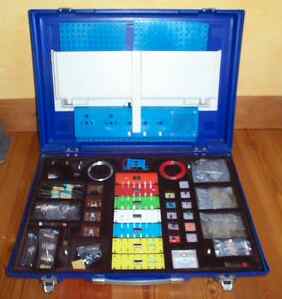
From the EE2000 series I have owned the kits EE2003,4,5,6,7,8,14,15,1,6,17 including the (dutch) EE2000 and EE2001 kit, a blue plastic large box containing a combination of EE2013, EE2010, EE2014, EE2015, EE2016 and EE2017 and with all the corresponding separate manuals. Also the 2040, 2041 and 2050 kit!
Perfect conserved EE2040 and EE2041 kits, the basic kits in the EE2000 series.
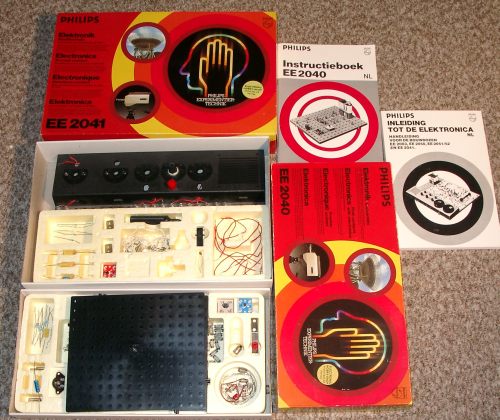
Philips EE2008
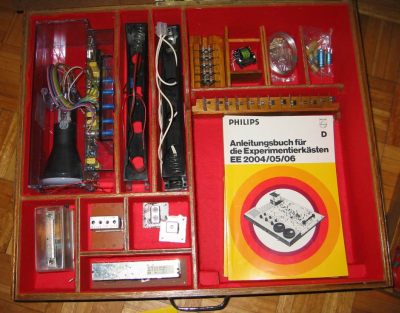
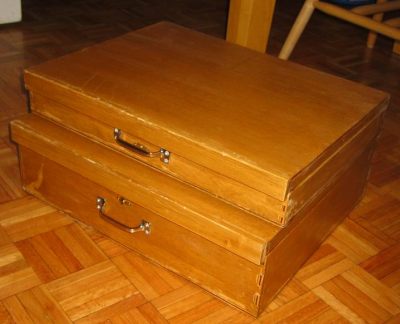
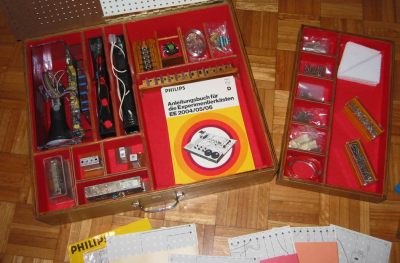
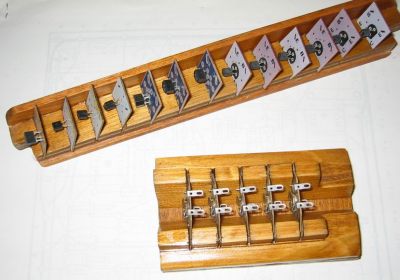
EE2007 and EE2008 in a nice wooden box
Equivalent to a combination of EE2003 + EE2041 + EE2051 + EE2052 + EE2004 + ee 2005 + EE2006
Equivalent to a combination of EE2003 + EE2010 + EE2014 + EE2015 + EE2016 + EE2017 + EE2006
Unieke verzameling, in uitstekende conditie verkerende, dozen uit de EE20xx reeks. De dozen zijn (op de EE2003 na) niet gebouwd, als nieuw en nog voorzien van folie.
De dozen zijn: EE2003, EE2004, EE2005, EE2006, EE2007, EE2008, EE2010, EE2014, EE2015, EE206 en EE2017.
The EE1050 series consists of the base kit EE1050, containing the board and the front. Special about this series is the small board, hence the name Compact Electronic Engineer. Two kits enhance the base wih more experiments like a loudspeaker and a third transistor.
The number of projects has grown considerably compared to the EE8/EE20 series. And the
germanium transistors are replaced with modern silicium types.
As you can see the flat experimenters board was enhanced with a real front which gives the projects a more professional look. The EE1050/51/52 manual is very instructive.
The design and first publishing of the EE1050 can be placed between the EE8/20 and the later EE1000 series time frame.
The dutch version is from 1967, a year when the EE8/20 was also still in production. The design of templates and instruction manuals is also close to the EE8/20 manuals.
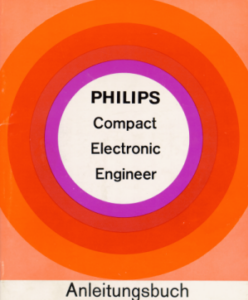 |
EE1050/51/52 manual (German) |
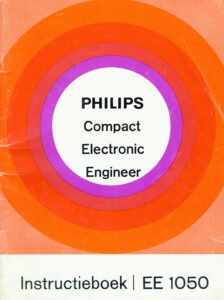 |
EE1050/51/52 manual (Dutch, version 1967) |
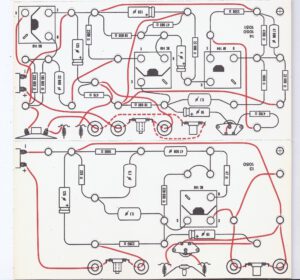 |
EE1050 design templates |
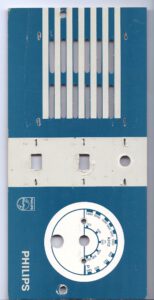 |
EE1050 51 52 covers and other inlays and experimenters boards |
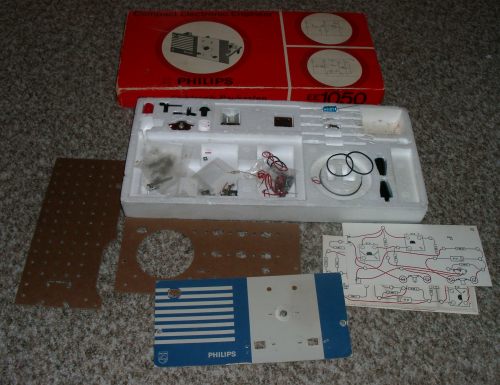
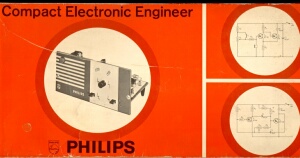
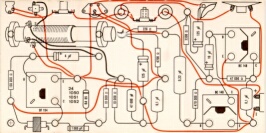
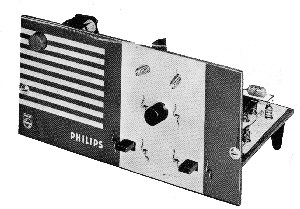
Unusual box, larger than standard EE1050
Version given by a friend
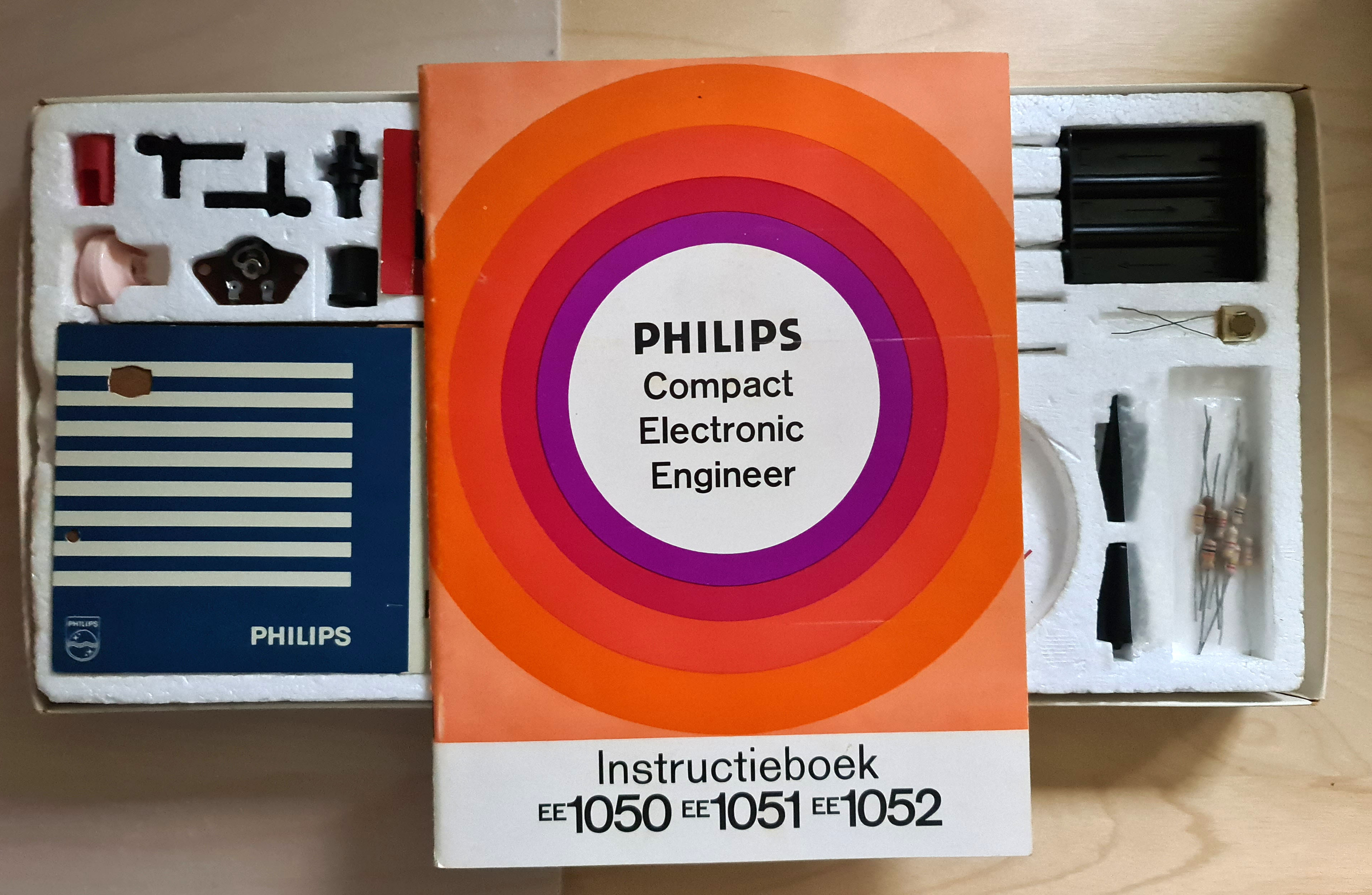
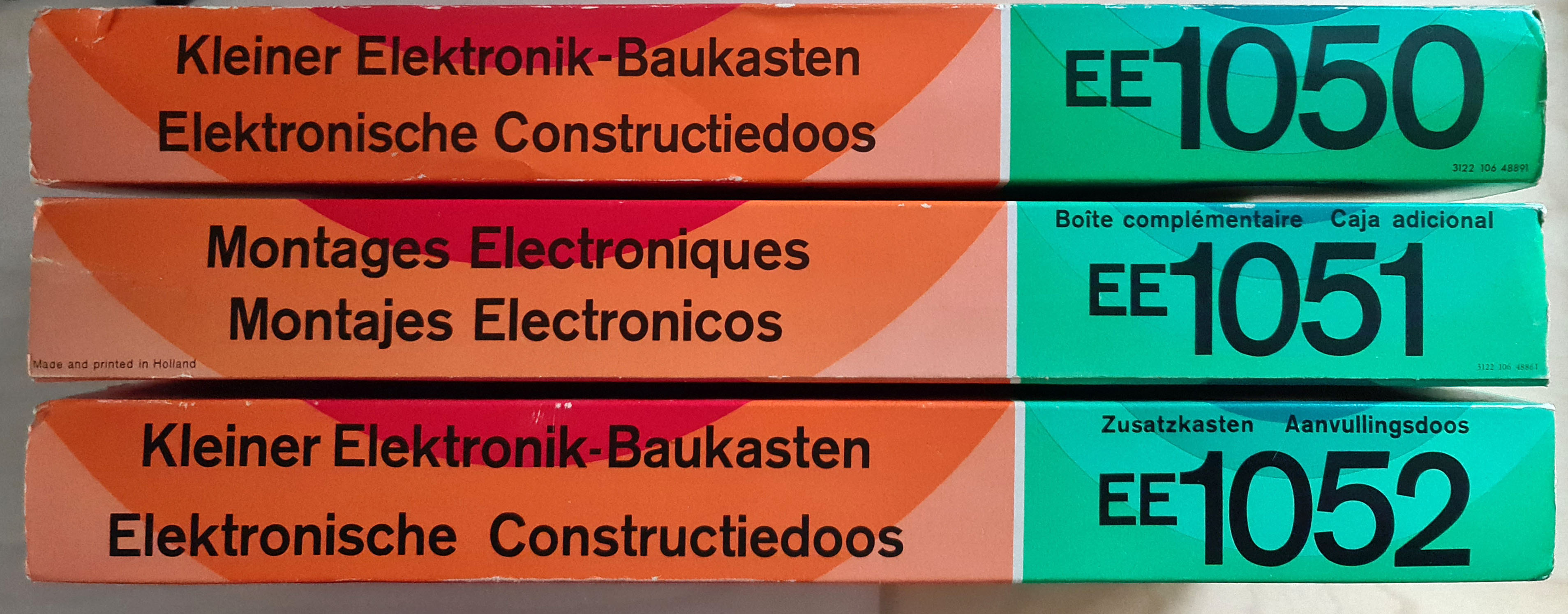
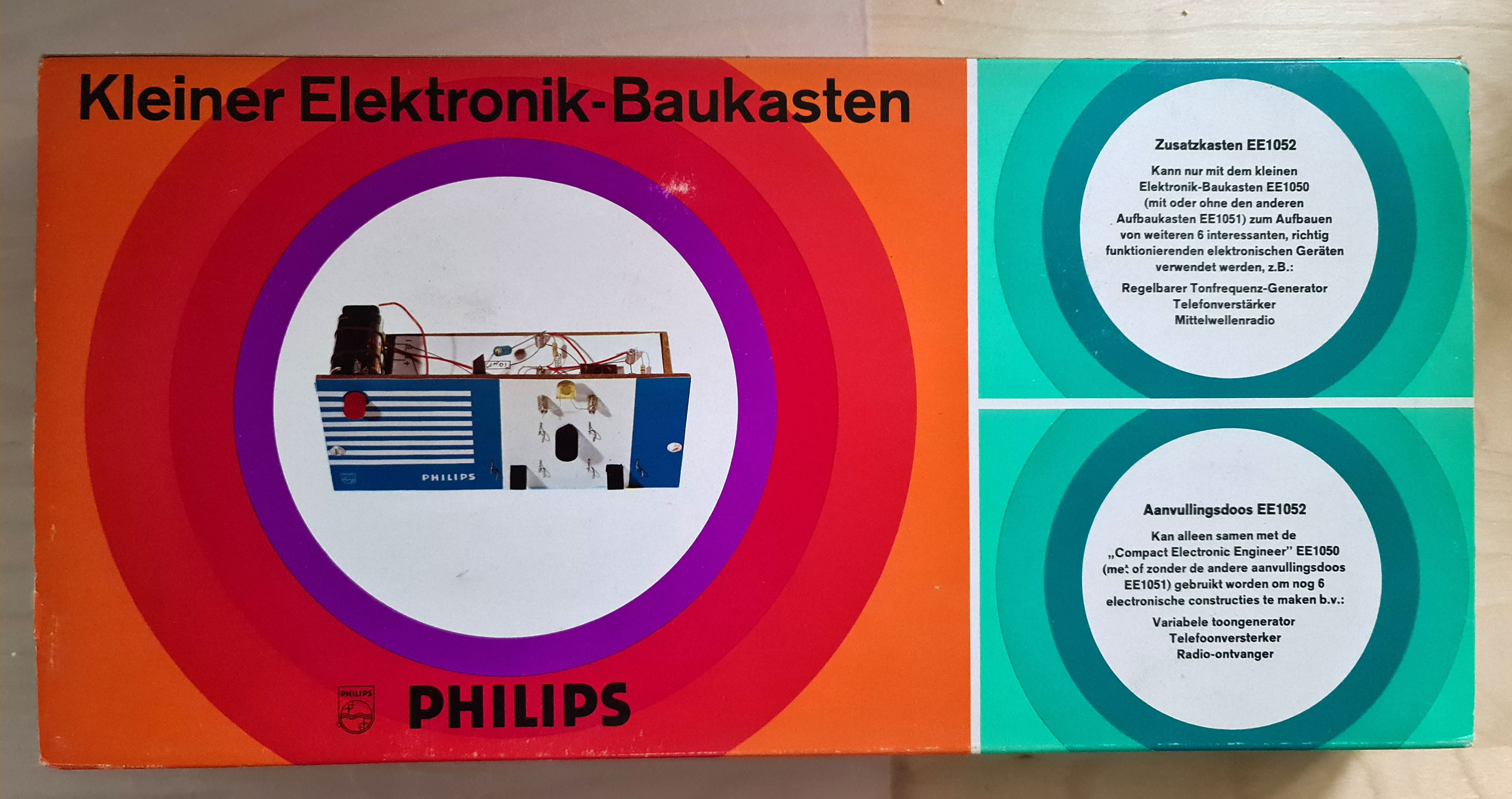
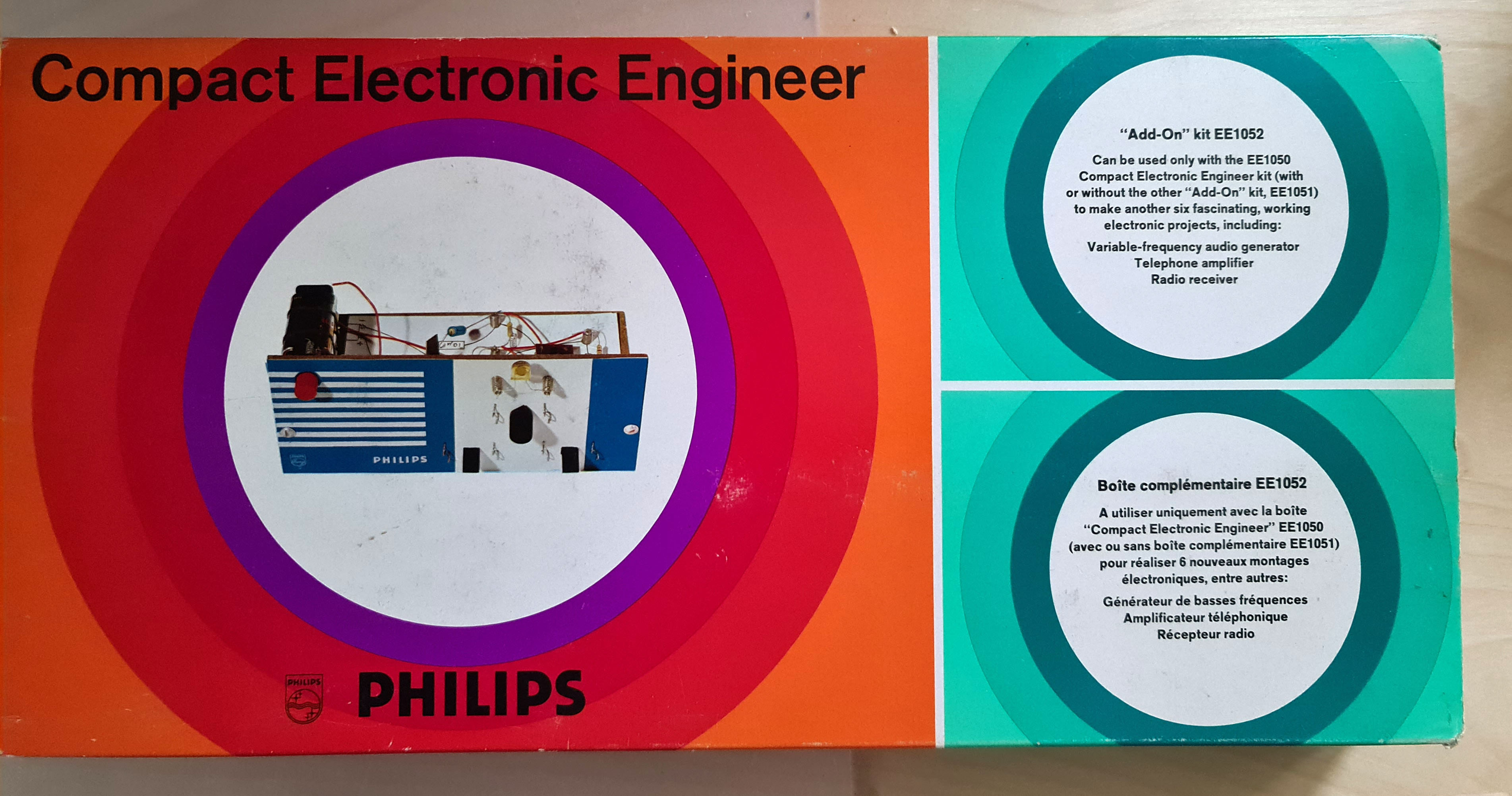
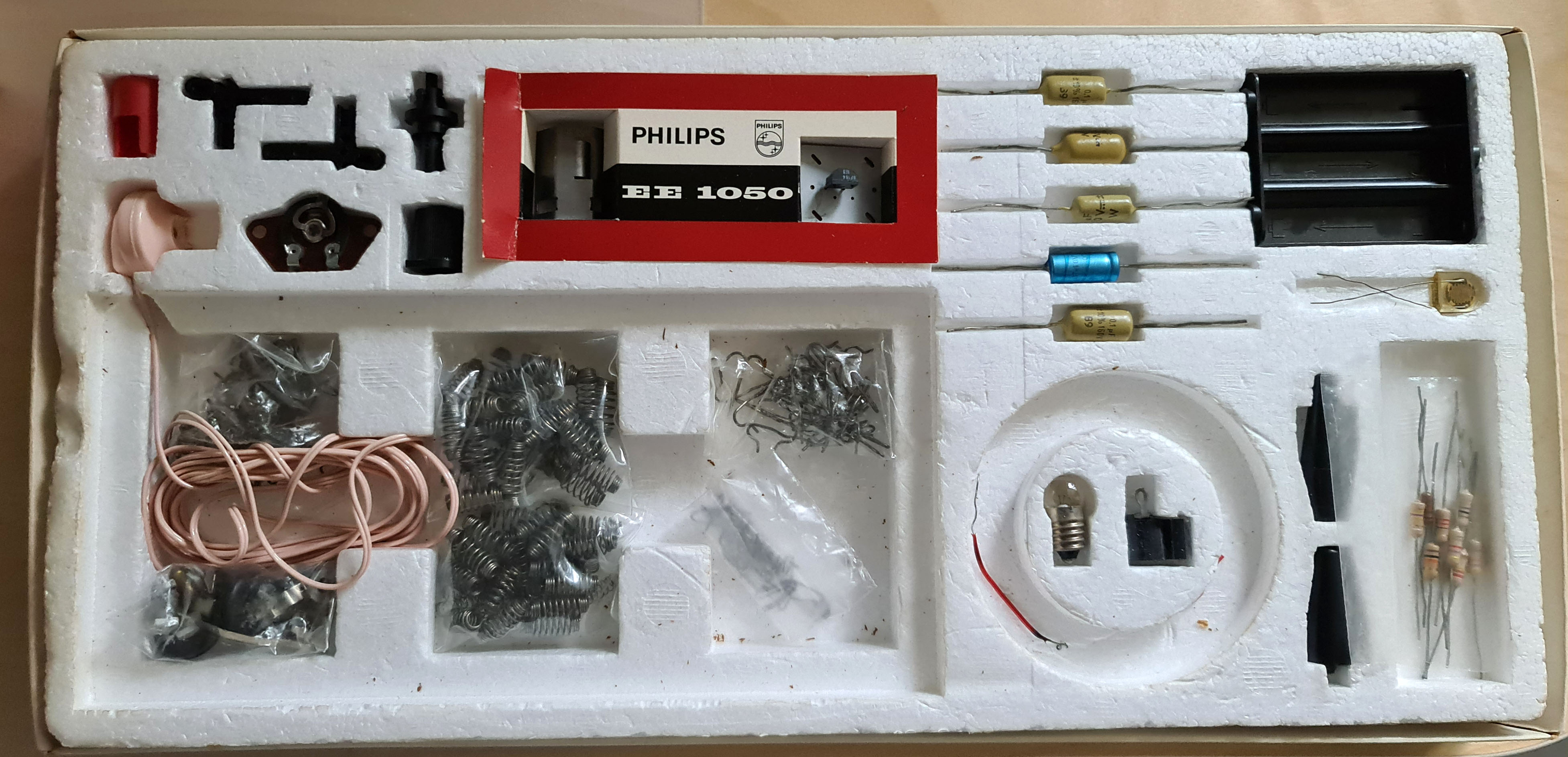
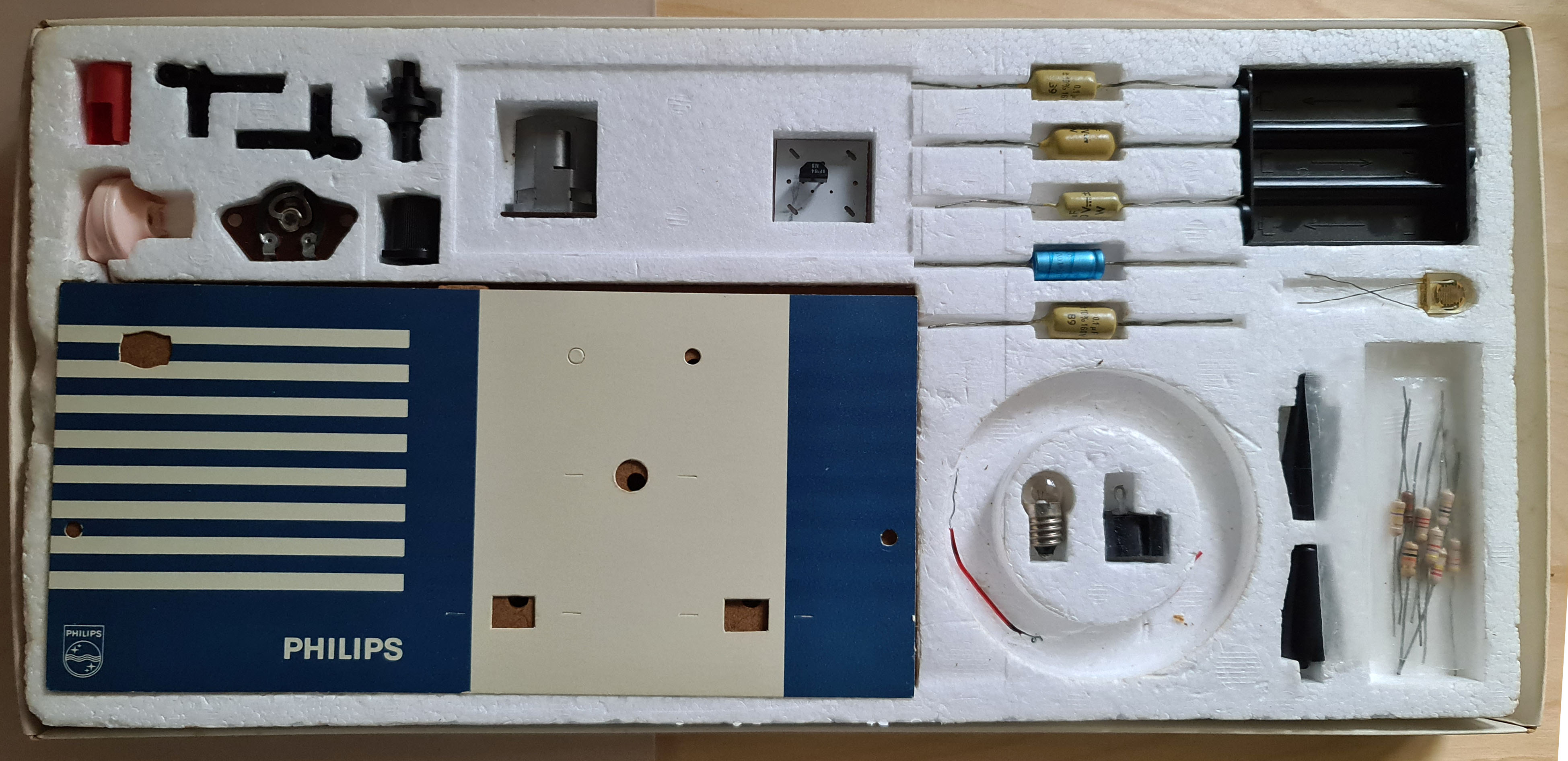
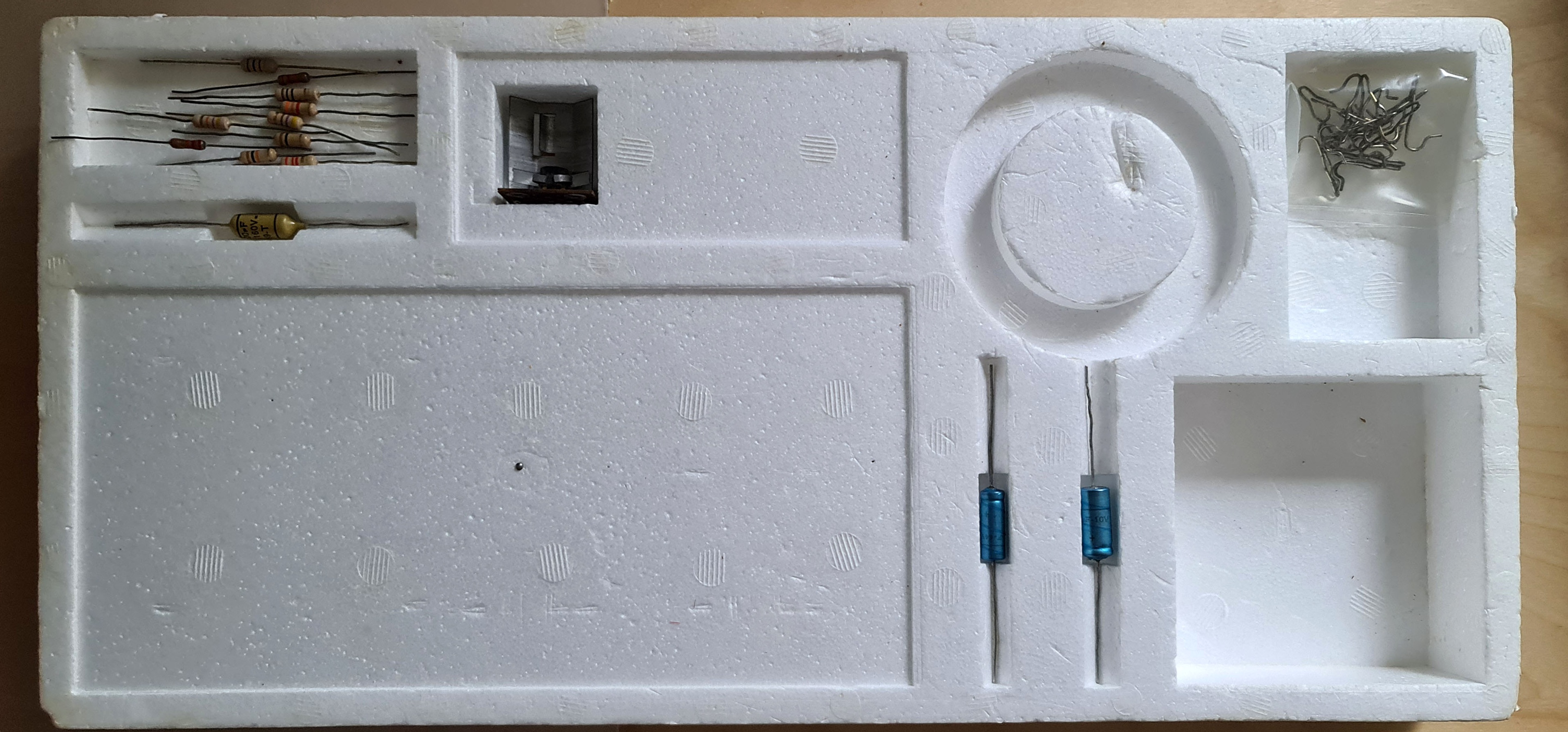
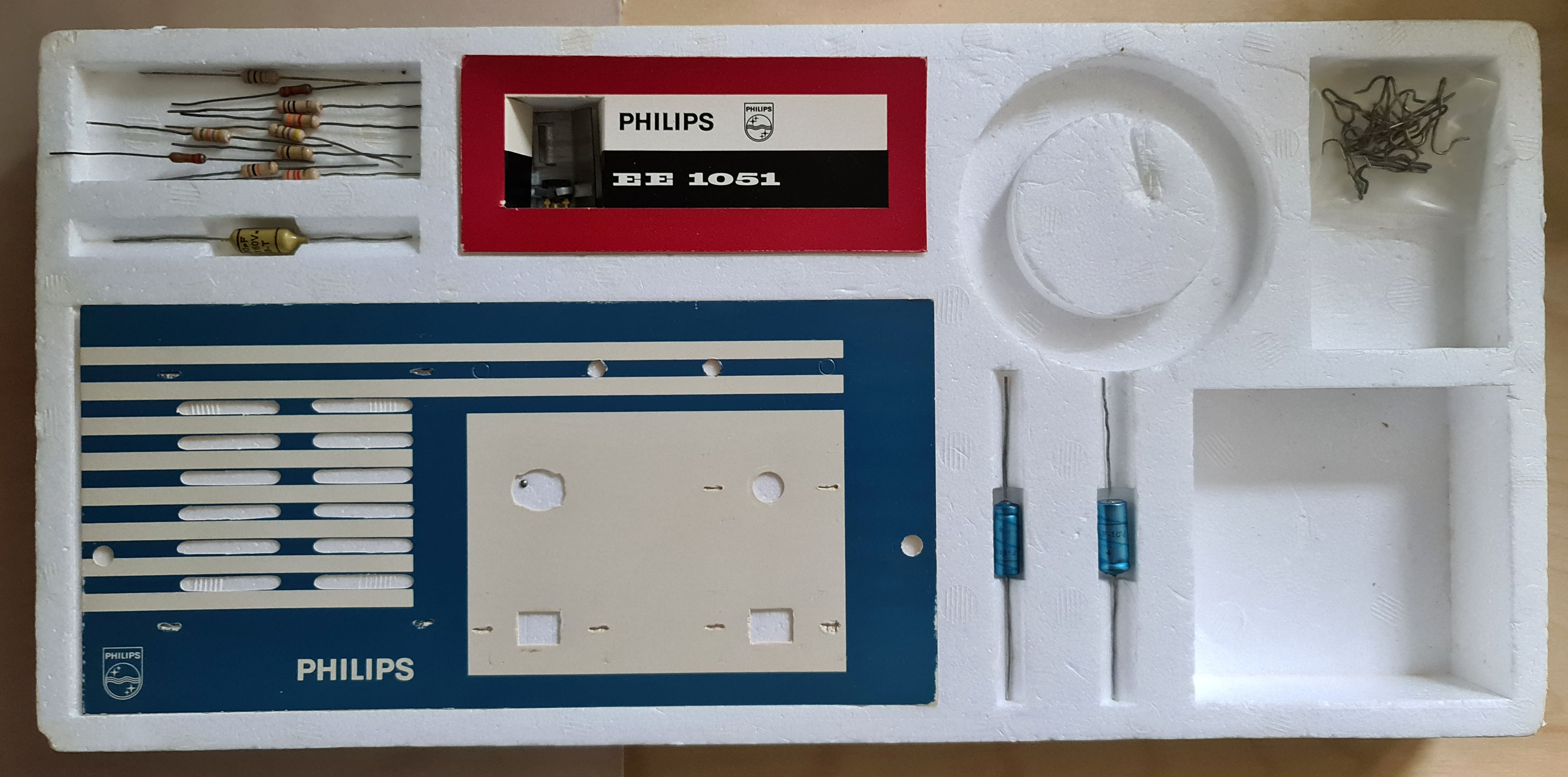
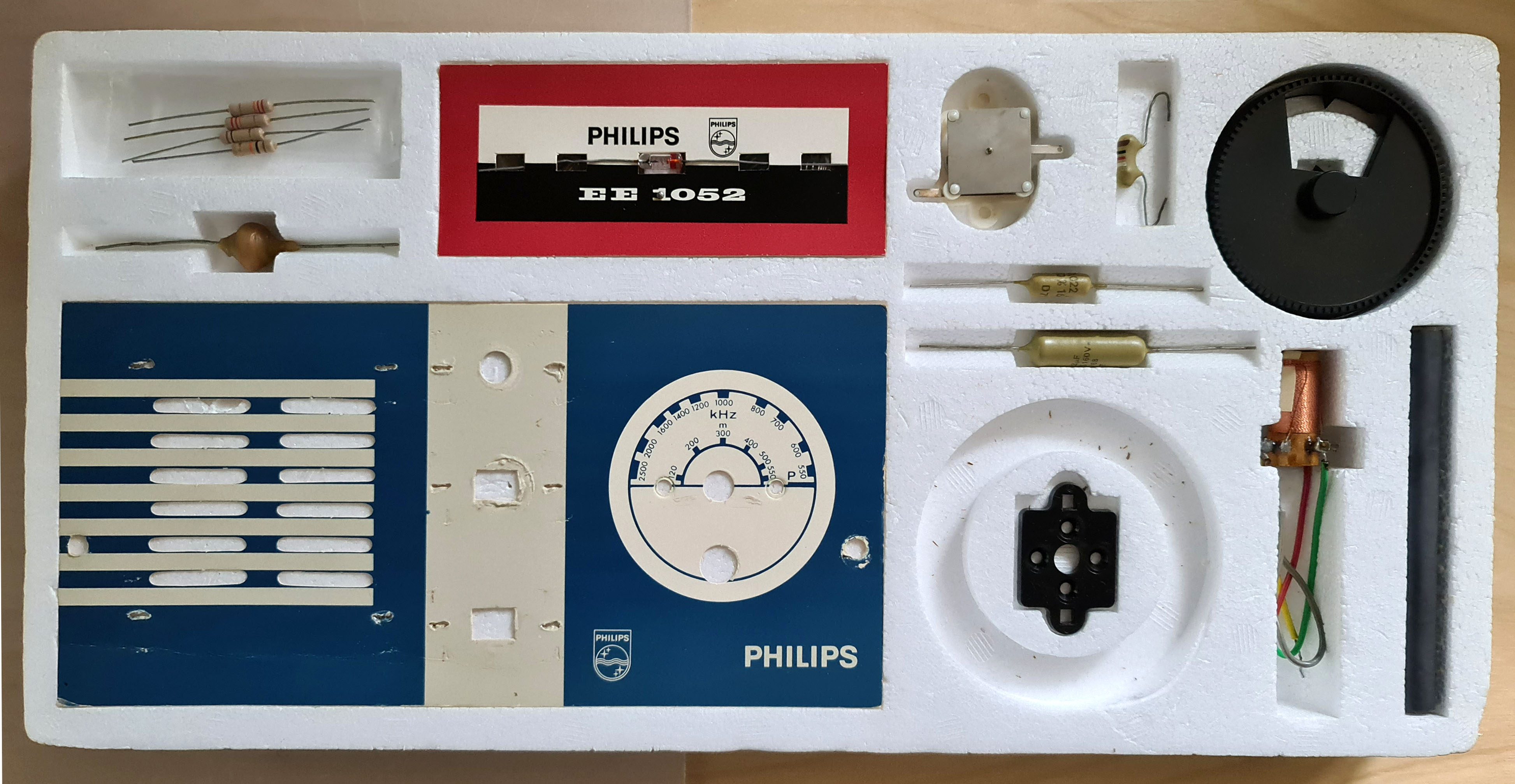
The EE1000 serie is published in many variants. The number of projects has grown considerably compared to the EE8/EE20 series. And the germanium transistors are replaced with modern silicium types. No sign of IC’s yet!.
As you can see the flat experimenters board was enhanced with a real front which gives the projects a more professional look.
The EE1003 has a large experimenters board, the EE1050 a small one.
Some radio projects are quite sophisticated, and come back in the EE2000 series. Compared to the Pionier and EE8/20 manuals the information in the EE100x manuals is quite compact and not very educational. The EE1050/51/52 manual is on the contrary very good.
Many experiments are about radio receivers for different wavelengths.
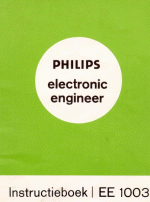
Design templates for the EE1EE1003
EE1005 user manual (dutch part only)
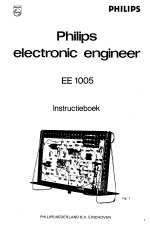 Other EE1005 dutch user manual
Other EE1005 dutch user manual
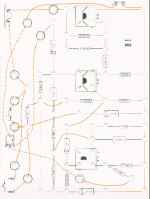
Design templates for the EE1004/5/6 series
Advertisement from the Philips magazine Hobbyscoop 1972 on the Philips EE1000 series and the CE boxes. Note the prices!
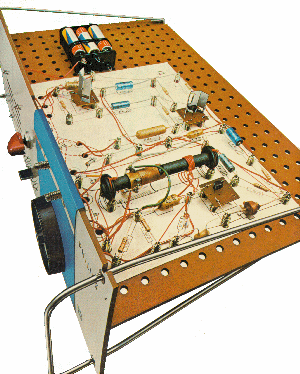
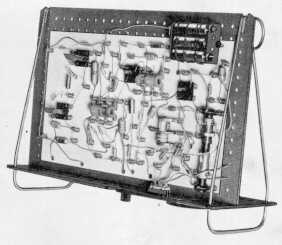
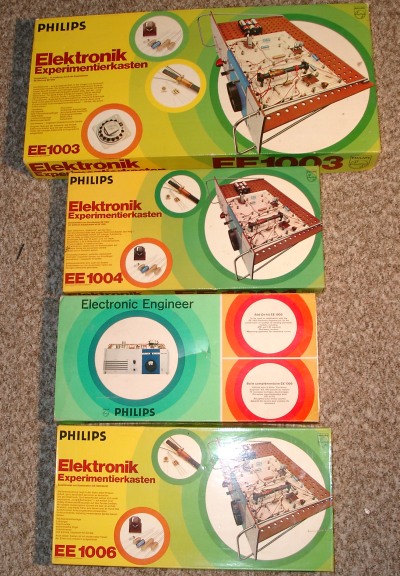

The combination of
ME1201 and EE1003 makes it possible, as with the ME1200 and the EE20, to combine electronics with mechanical models. This is documented in the ME1201 diagrams.
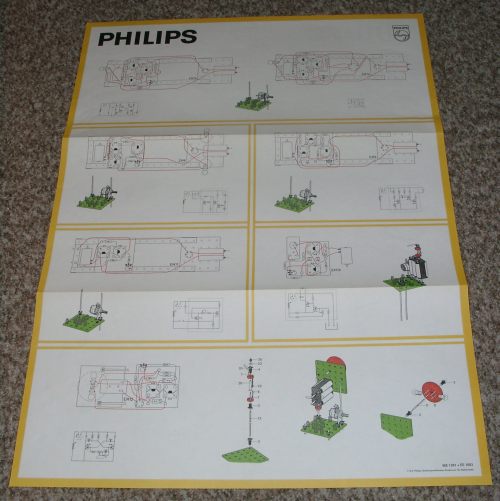
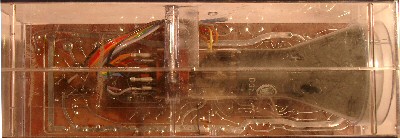
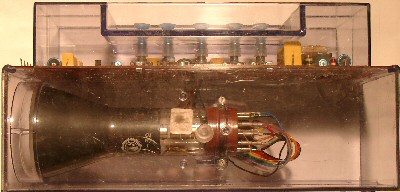
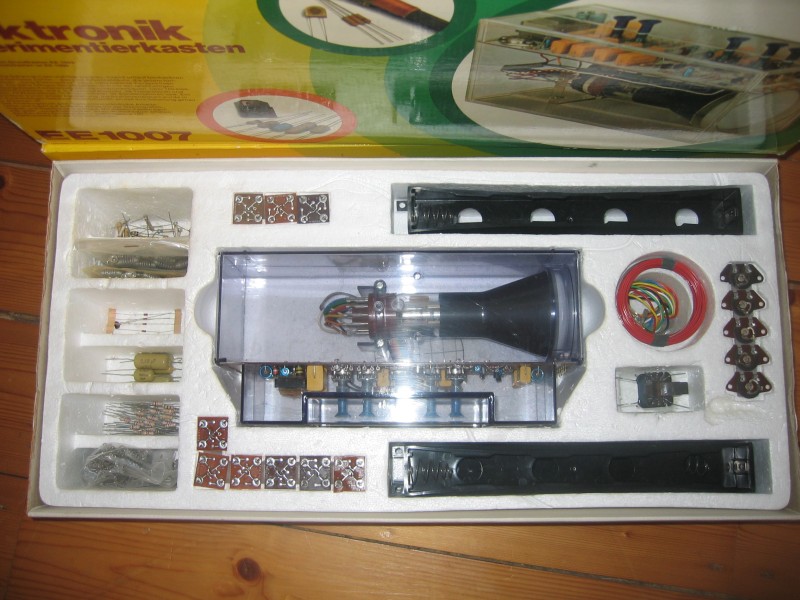
I received the following pictures and story from Hugo Sneyers, showing the long wave enhancement he found in the french EE20 kit.
Hugo Sneyers acquired in 2005 an EE20 kit and found in the box an addition to the midwave radio experiments: long wave radio (‘GO = Grande Onde’, longwave, and ‘PO = Petites Onde’, midwave).
Shown here are the two templates (watch the GO and PO as options at the switch) and the two loose pages. This is similar but not equal to the Long Wave EE1916 kit. In fact it must have been the standard kit as delivered in France:The box was in good condition and barely used. There were 22 templates, and not only the templates with only midwave radio. Also the dial shows both midwave and longwave, contrary to the normal kits.
The text on the loose pages reads: “Votre boite de montages electronique EE est pret pour recevoir, les gammes Grandes Ondes et Petites Ondes” which can be translated as “Your electronic EE kit offers midwave and longwave reception”. The manual is the standard manual.
The two pages describing the alteration with midwave (PO) and longwave (GO)
The ferrite with coil
The dial carton with GO and PO and scales
Scans by Hugo Sneyers
I received the following story, written by John Lusty from South Africa, with the photographs he made in October 2005. What follows is his story!
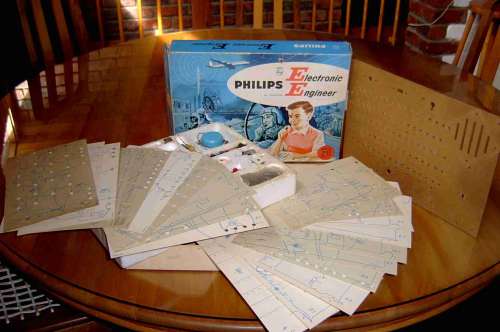
A general view of my EE20 kit, showing that it is still complete, including ALL the templates!
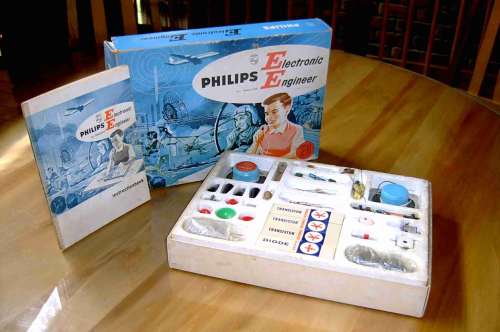
Another view which includes the Instructionbook, still in good condition !
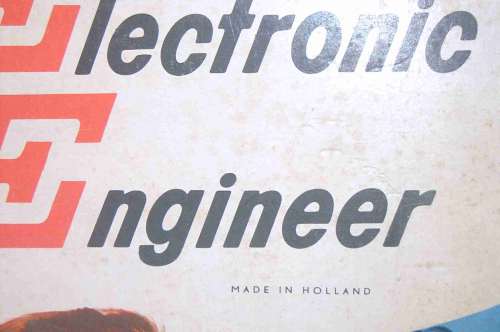
A close-up of "Made In Holland" on the box. It seems like I have an original kit, imported from Holland. This is not surprising, as our ties to Europe have always been strong, and Philips is still a major corporation in South Africa today.
My story of how I came to get my EE20 kit is in some ways typical, but has one rather interesting twist in it :
From the age of about 9 or 10 I become interested in anything electrical; I liked to play with batteries, little electric motors, torch bulbs, switches etc, and from there, I progressed to radios and amplifiers, and wanted to understand how they worked. My father was a musician, but had been an Officer in the Royal Core of Signals in the British Army during World War II, and so he had some basic electronic knowledge (but only for valves, not transistors !). I also listened to the radio a lot, and when I was 11 years old in 1965, I heard a radio commercial for the EE20 kit, on our local radio station Springbok Radio. The programme was called "The World Of Philips", and as soon as I heard about the kit, I knew I wanted one. A few weeks later, I saw the kits in a local store, and knew from that moment onwards that this is what I wanted ! I became totally obsessed with the idea, but had to wait a few more months until Christmas, before I could get it. The price for the EE20 at that time was ZAR20.50 in local South African currency, which is about Euro2.50 !!!
And now for the very unusual part of the story. You may recall that in 1967, South Africa’s Professor Christian Barnard performed the world’s first heart transplant. The young woman who was the donor had been killed in a road accident, together with her Mother, and it was this lady ie the donor’s Mother, who had sold me the Philips kit in the store. I recognised her photograph in the newspaper, two years after getting the kit. I found this a very strange coincidence indeed. You may find some of my experiences with the EE20 interesting.
On Christmas day, 1965, I received the EE20, and could not wait to build my first circuit. I remember it was the Morse-code trainer, circuit B1 of the kit. However, the battery polarity was not clear; the template has a "B-" to indicate negative, but ALL the photographs in the Instructionbook indicate that this is connected to the positive terminal of the battery. Knowing that incorrect battery polarity could damage a transistor circuit, this worried me quite a lot. We reasoned that the photographs must have been correct, as we assumed these were working models, and so I connected the battery as shown in the photographs. The photographs were actually incorrect, and so the circuit would not work. I was so upset, until we reversed the battery polarity and everything was fine. Philips later corrected the mistake in the Instructionbook photographs with an updated edition the following year; refer to the article below for a more detailed description of the error in my Instructionbook photographs.
I built most of the circuits, but those which gave me the most fun were the 3-transistor Radio Receiver (Circuit C3), and the Intercom (Circuit B3). I discovered that if you touch one side of the OA79 Diode in the Radio Receiver, it oscillates and makes quite a good Medium Wave Morse Code transmitter !
Of course, I soon started to experiment with other circuits, which were not part of the EE20 kit. I would use some of the EE20 components and the spring mounted baseboard, but buy extra components to make many other circuits, such as low powered radio transmitters and more powerful audio amplifiers which were great fun !
From the day that I heard about the EE20, there was absolutely no doubt that I wanted to make electronics my career. As a young boy, what gave me the passion for it was my frustration with not being able to design my own electronic circuits. By the time I was 14 years old, my father could not teach me any more about radio and electronics, and I eventually went on to study Electronic Engineering at University so I could understand the electronics properly ! I graduated with a Bachelor of Science Degree in 1975, and after a few years work experience, went on to qualify with a Masters Degree in 1981.
Now that I look again at the EE20 circuits as a trained engineer, I obviously understand them very well, as they are simple, straightforward circuits, which worked surprisingly well. However, I have never stopped admiring the Philips engineers who designed the EE20, as they provided a wide range of circuits using only a very small set of basic components; it is a very good piece of design work. I understand that Steef Koenen was one of the original developers of the EE-series of kits at Philips. (My second language is Afrikaans, and I find I can read and understand most of the Dutch on the websites, which is quite useful when talking about Philips !)
After so many years, it is very interesting to read the Instructionbook again through new eyes. The smartestthing I picked up is the design of the Radio Receiver (circuits C1, C2, C3)- it is a reflex design, which saves having to use an extra transistor – the first stage AF116 is both a Radio Frequency and Audio Frequency amplifier – clever ! I find this website and Tor Gjerde’s website to be the most interesting, as they both have some details on the EE20. However, I see that the EE1000/2000/3000 Series of kits followed on from the EE20, with many improvements, the most obvious one being the change from germanium PNP to the more modern silicon NPN transistors. Just for fun, I think I will revise the EE20 circuits to use silicon NPN transistors – and this time I will know which way round to connect the batteries 🙂
I do not recall seeing any of these later kits in South Africa – as I am sure I would have bought one if they had been available. However, I think the later kits were greatly influenced by the earlier EE5/10, and EE8/20 series, which is probably where Philips made their mark. I think that Philips as a company was extremely far-sighted in developing their range of kits, as I am sure it provided the initial spark in many young teenagers, like myself, to decide on electronics as a career.
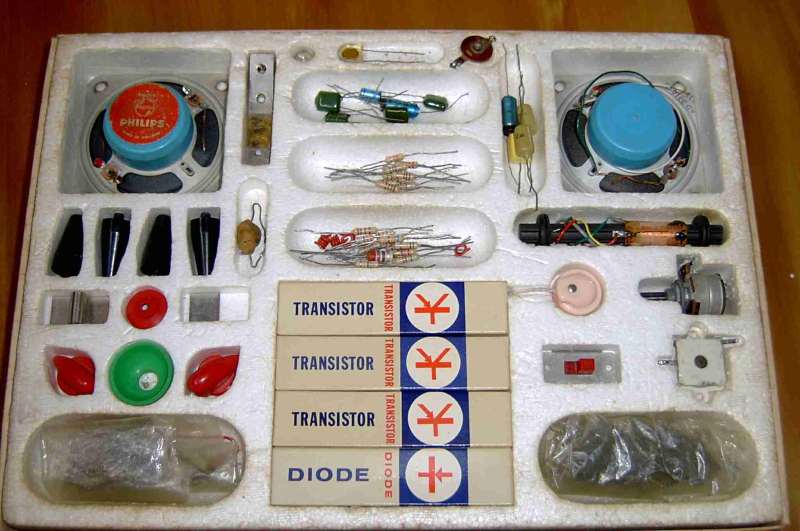
Close-up of all the components
I still have some of the original Philips polyester and electrolytic capacitors, but all the resistors have long since been replaced; I actually still have most of the original resistors, but with frequent handling, the colour bands got very dark (eg red and green started to look like brown !), so these were replaced, as resistors are quite cheap ! All the major components are still the Philips originals ie potentiometer, tuning capacitor, ferrite rod antenna, one of the speakers, earpiece, LDR, switch, knobs, heatsinks, metal plates, choke coil, baseboard, circuit templates and Instructionbook. The speaker on the left, with the Philips label, is original, but the one on the right, with no label, is a replacement, but is a genuine Philips part, which I purchased from Philips here in South Africa. Of course, ALL the transistors have been replaced several times, mainly due to accidents when I started to experiment with my own circuits ! However, the OA79 diode is still the original. I found the component replaced most often was the AF116 transistor, as this seemed to blow very easily.
The first figure is a scan of page 23 of my own paper copy of the EE20 Instruction book, purchased in 1965. I have annotated the figure to indicate that the batteries are connected the wrong way round in the photograph. All the photos throughout my copy of the book indicate incorrect polarity just like this one.
On the back cover of my paper Instruction book, in small print at the bottom, is printed:-
Copyright N.V. Philips’ Gloeilampenfabrieken – Eindhoven – The Netherlands – 1965
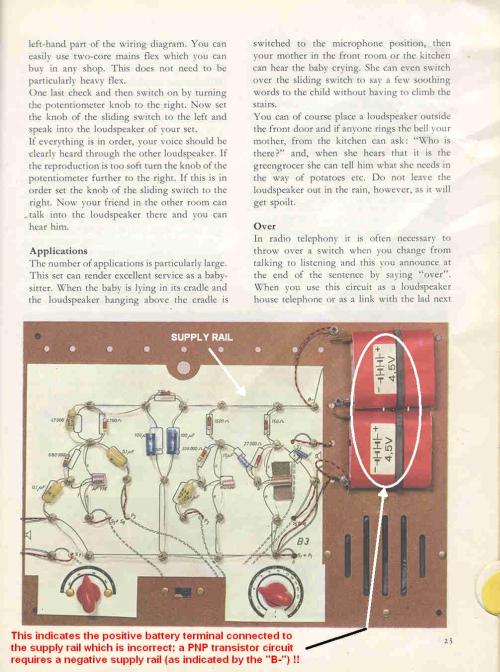
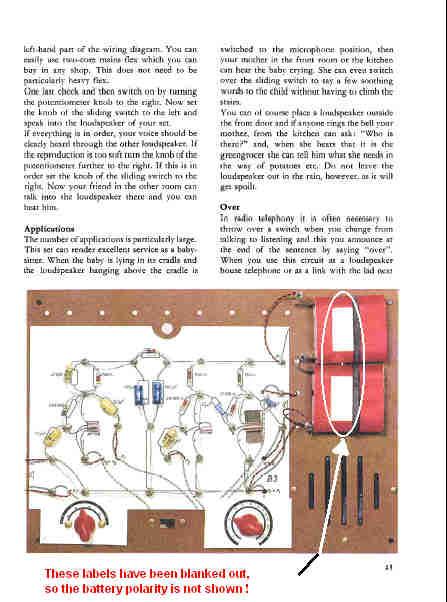
The figure above is the same page extracted from the pdf document in Tor Gjerde’s Library, which has the battery polarity blanked out. On the last page of this pdf Instructionbook the same small text appears as on my paper copy, but the publication date is 1966, and the part number of the book is completely different. My older paper copy, and the newer pdf file also have small differences in other places.
The later publication date of the pdf Instructionbook suggests that Philips picked up the error and very quickly published an updated edition in 1966 (Torhas told me that there were blank stickers placed over the battery polarity in the paper copy he scanned). Throughout the rest of the book, wherever battery polarity is discussed in the text or indicated in the blue schematic diagrammes, the polarity is correct – only the photographs are incorrect. These could therefore not have been working models as I had assumed – ie they are merely “dummies” for the photographs !
Any engineer, such as myself, would immediately recognize this as an obvious error, but when I was 11 years old, I did not know what I know today ! To the uninformed, this is quite a serious error, but after 40 years, I have forgiven Philips … this is, after all, how we learn !!